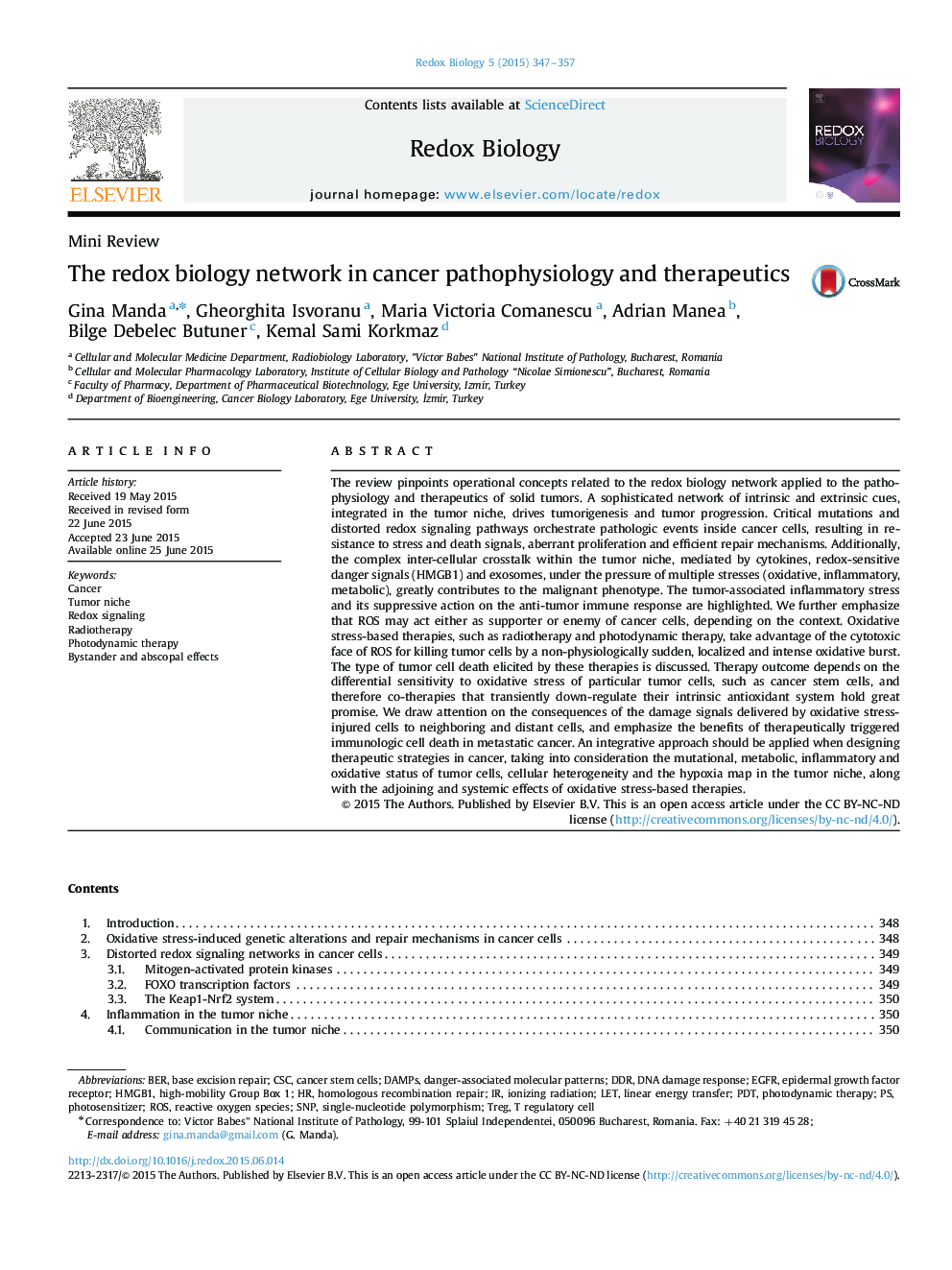| Article ID | Journal | Published Year | Pages | File Type |
|---|---|---|---|---|
| 1923142 | Redox Biology | 2015 | 11 Pages |
•Critical point mutations and distorted redox-sensitive signaling pathways underlie the tumorigenic phenotype.•Inter-cellular crosstalk under stress conditions in the tumor niche drives the behavior of tumor cells.•ROS may act as either as supporter or enemy of tumor cells, depending on the context.•Oxidative stress-injured cells deliver danger signals to neighboring and distant cells, hence dictating the outcome of therapy in cancer.
The review pinpoints operational concepts related to the redox biology network applied to the pathophysiology and therapeutics of solid tumors. A sophisticated network of intrinsic and extrinsic cues, integrated in the tumor niche, drives tumorigenesis and tumor progression. Critical mutations and distorted redox signaling pathways orchestrate pathologic events inside cancer cells, resulting in resistance to stress and death signals, aberrant proliferation and efficient repair mechanisms. Additionally, the complex inter-cellular crosstalk within the tumor niche, mediated by cytokines, redox-sensitive danger signals (HMGB1) and exosomes, under the pressure of multiple stresses (oxidative, inflammatory, metabolic), greatly contributes to the malignant phenotype. The tumor-associated inflammatory stress and its suppressive action on the anti-tumor immune response are highlighted. We further emphasize that ROS may act either as supporter or enemy of cancer cells, depending on the context. Oxidative stress-based therapies, such as radiotherapy and photodynamic therapy, take advantage of the cytotoxic face of ROS for killing tumor cells by a non-physiologically sudden, localized and intense oxidative burst. The type of tumor cell death elicited by these therapies is discussed. Therapy outcome depends on the differential sensitivity to oxidative stress of particular tumor cells, such as cancer stem cells, and therefore co-therapies that transiently down-regulate their intrinsic antioxidant system hold great promise. We draw attention on the consequences of the damage signals delivered by oxidative stress-injured cells to neighboring and distant cells, and emphasize the benefits of therapeutically triggered immunologic cell death in metastatic cancer. An integrative approach should be applied when designing therapeutic strategies in cancer, taking into consideration the mutational, metabolic, inflammatory and oxidative status of tumor cells, cellular heterogeneity and the hypoxia map in the tumor niche, along with the adjoining and systemic effects of oxidative stress-based therapies.
Graphical abstractFigure optionsDownload full-size imageDownload as PowerPoint slide
